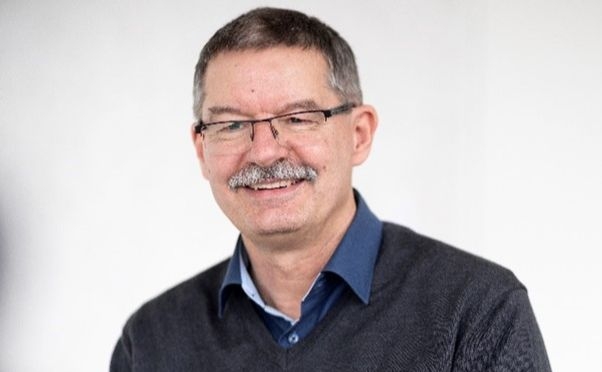News

Interview series with RILEM prominent members: Dr Peter Richner
Interview with Dr Peter Richner, Empa, Switzerland
Dr Peter Richner is Head of Department "Engineering Sciences" and Head of Research Focus Area "Energy" (jointly with Björn Niesen) at Empa – Materials Science and Technology – in Switzerland. Dr Richner served as RILEM treasurer from 2002 to 2006. Dr Richner was elected as Vice President in 2006 and took over the mandate as President in 2009. From 2012 to 2015 he served as Immediate Past President of RILEM. Dr Richner was also elected RILEM Fellow in 2007.
1 December 2021
RILEM Implementation Manager (RIM): Do you remember when you joined RILEM?
Dr Peter Richner (PR): I think it must have been in 2001 or 2002. There is a special reason for that. As you know RILEM is an association according to the Swiss law. That must have happened in the mid of the 70ies. Before that date RILEM was a French association. From that time on, someone from Empa was always the treasurer… just to have a relation to Switzerland in case there were any legal questions. It was decided that was the way to go. Before me, it was Fritz Eggimann (Editor’s note: Prof. Eggimann was RILEM Honorary member in 2002) who was at that time Director of Empa. He retired around that period and I became the Head of Department of Engineering Science and I stepped in for him as RILEM treasurer. I was not active in RILEM before then, to be honest. Of course, lots of people in my department were active.
RIM: I can see from the RILEM system that you became treasurer in 2002. This is, then, when you joined RILEM, simultaneously as member and treasurer!
PR: Yes! I mean… Empa has always been an institutional member so everyone here is acquainted with RILEM even though there are not officially members.
RIM: I see! Did you join then any technical committee or you were busy enough to be the treasurer of RILEM?
PR: I was more than busy enough by being treasurer. I remember I was elected in Madrid (Editor’s note: the 56th RILEM Annual Week took place in Madrid, Spain, in 2002). I came back home and two weeks later I received a 20-page letter from the French Tax Authority and to be very honest even if it had been written in German, I would have not understood what was there. The only thing I realised was that they were asking so much money that if we had had to pay, RILEM would be bankrupted.
RIM: Did RILEM manage to not pay that money?
PR: Yes! We then went into a long legal case and finally we got the way. Of course, we had to clarify a couple of things on our side, but we managed to do so.
RIM: Then in 2006 you started your 9-year long journey in the RILEM Presidency, being RILEM Vice-President. You worked with Prof. Mark Alexander and Prof. Arnon Bentur.
PR: Yes, Prof. Bentur was the RILEM President when I was elected Vice-President, and Prof. Alexander was Vice-President when I was President.
RIM: How did that happen? You nominated yourself? Someone proposed this role to you?
PR: Back then, many of the decision in RILEM had been taken by a close circle of people, I would say. I was proposed. The person that actually proposed me, asked me first. It was nice of him! I knew it upfront and that was the way I was elected. Formally, I was proposed by the Bureau to the General Council, but that was only a formality. We changed this afterward into a process in which RILEM members have their say, but back then this was not the case.
RIM: What do you think was your impact as RILEM President in the current structure of RILEM?
PR: The years of the presidency of Prof. Bentur and mine were very stormy times. We had a couple of issues to resolve. First of all, we knew we wanted the organization to have a much stronger focus towards its members, make it more open. We had to set up a new structure and we brought in Prof. Geert de Schutter as Director of Development. That was a completely new role that we had. During my Presidency, what I really tried to do was to make RILEM a more inclusive Association. For example, before that only very few people could attend the General Council and had the voting right. That was something that I had changed in the Statutes, that is, every RILEM member can now participate and has a voting right. Of course, we also created a couple of safety belts, like for instance to prevent during a General Council meeting a small group of people to take the control of the association. I was very fortunate to have a team in the Bureau that really supported that change. Another big step during that time was the handing over of Materials and Structures to Springer, a professional publishing company. Before then, we had managed the journal ourselves. At the same time, we were able to keep the technical committees at the heart of the association. That is the life of RILEM. We also managed to make sure those committees did not last forever. This is very important as it gives a certain dynamic. This is something to which Prof. Bentur paid lots of attention. We also gave PhD students a much more prominent role in RILEM, thanks to Prof. Ole Jensen. We had some financial issues but eventually we were able to solve them and in the last 10 years or so RILEM has done very well in the financial side. When I was President the offices of RILEM were at Bagneux, a very terrible place.
RIM: I am delighted to inform you that RILEM is moving again! The new premises of RILEM are inside the Gustave Eiffel University.
PR: I see! That is a good thing to be close to a research organization or even within a research environment.
RIM: I am glad you mentioned the role of Prof. Jensen in the involvement of PhD students. Do you think there is still room for improvement in the relationship between RILEM and the young generation of scientists?
PR: I am not so close to the organisation anymore to comment on this aspect. I think that what we have to make clear to the young people is “RILEM is really an opportunity for a young person in a field to get in contact to the most prominent researchers in that field”. That is something that I have always admired at RILEM, its openness, that fact that everybody was talking to everybody, like a PhD student approaching a professor. It is an enormous opportunity for young people to start to build up their own network. Especially in COVID times, it is harder to establish a network as you have much less conferences where people are physically present. RILEM with its technical committees can offer a platform, even in COVID times, through an online meeting, with people from all over the world. Before COVID, travelling expenses were always an issue. That problem is basically gone and then you have a relatively small group of 10 or maybe 15 or 20 people who are experts or on their way to become expert in a specific field who can discuss together. Maybe this was also something I tried to push forward, something that had already started with Ake Skarendahl (Editor’s note: RILEM President in 2003-2006) and Arnon Bentur (Editor’s note: RILEM President in 2006-2009) to make RILEM less a European organization and try to include people from China and Russia, for instance. We established a group again in Latin America (Editor’s note: LatRILEM was founded in 2010). Traditionally RILEM had been very active in that part of the world (Editor’s note: E.L. Da Fonseca Costa, Brazil, and S.A. Delpech, Argentina, were RILEM founding members in 1947) but somehow this got lost so we reinitiated that. If there is a student today in Argentina, he/she doesn’t have to travel. He/she can become a member of a Technical Committee which fits his/her field and get in contact with some of the most renowned experts. This is a tremendous opportunity that, by the way, not many other organizations in other fields can offer as we do in RILEM.
RIM: You are very busy in your role of Head of Department "Engineering Sciences" and Head of Research Focus Area "Energy" at EMPA, but if you had the time to establish a new RILEM Technical Committee, which topic would you cover today?
PR: CARBON NEGATIVE CONSTRUCTION MATERIALS. Put it this way: my dream is that we get to a point in which we say “thanks to the fact that we have built this structure, the CO2 concentration in the atmosphere has diminished”. This is where we have to get to! We really have to find a way to the built environment to become a sink for CO2.
RIM: Did you enjoy working with Mark Alexander and Johan Vyncke, etc…?
PR: Yes, of course! And also Arnon. They became friends. You know, all of us did this on a voluntary basis. We spent our time and money on this organization and there was such a good team spirit! There was never an issue like “no, I do not have time to do this now”. Everybody was always into “yes, let’s do it” and “of course I am going to do that”. This time of team spirit, I have personally never found it in other organizations. That was so exceptional! We really went through difficult time but also we had so much fun and there was so much trust amongst us. Everybody could rely on the other one, 100%.
RIM: Prof. Alexander has recently edited the 75th RILEM History Booklet. He asked all RILEM members to share their memories and personal experiences in RILEM. I think people are always very curious about some “juicy things” that happened during a RILEM event. Would you like to share your thoughts?
PR: Well, I have already shared an anecdote with Mark (Editor’s note: this can be found in the Temporary Appendix of the 75th Anniversary booklet. An extract is given here: “This can be illustrated by a little anecdote from the RILEM Week 2011 in Hong Kong. We proposed to the General Council a change of the rules for the participation in the General Council. Until then, only a limited number of people were permitted to vote during the General Council, typically representatives of Titular Members. The new rule said that basically every member has a voting right. However, only members who paid their fees were considered as members. This immediately triggered the remark by the Honorary Member Prof. H. Reinhardt from Stuttgart that he would not be able to participate in the General Council anymore since Honorary Members do not pay a membership fee ... It was probably the most embarrassing situation during my Presidency, but we managed to change the rules on the spot accordingly and the General Council approved them.”) Another story that I will never forget is this one: I mentioned before that we handed over the publishing of Materials and Structures to Springer. It was a long process and we talked to several publishers before reaching an agreement with Springer. Before that, we had managed to publish Materials and Structures. There were always some issues here and there but at the end all worked. When we joined Springer, we thought “Finally everything is going to be perfect” but it turned out that they had just switched their printing company in India and it was a complete mess as for 5 months they were not able to publish a single issue. Not one! For us it was difficult to explain to our members such a delay “Sorry, there is no journal at the moment”. And we kept on asking and finally we set a meeting in Bagneux and really… the office there was not the nicest. The meeting room was in the basement. It was a terrible place, with bad light, cold air… so we had 5 people from Springer, one of them from the very top management level and they brought us the first 15 printed copies of the journal. I think they made them by hand as they were so embarrassed that their system completely collapsed!
RIM: While we talk about Materials and Structures, I have one last question: the year after the end of your mandate as RILEM Out-going President in 2015, RILEM established RILEM Technical Letters, a completely OPEN ACCESS journal. Where do you think is the future of Materials and Structures? Should it turn into an OPEN ACCESS journal too?
PR: I think we should go for OPEN ACCESS. We had this same discussion during my days as President, but it was a much more exotic topic by then. How does the system work? Well, first of all we try to develop a scientific idea, then we try to find money to get the research funded. Then we do the research, then we write the paper. Then we do the review of the paper and finally it is published and we have to pay to read it. I do not think this makes sense, not at all… Furthermore, most of our funding is coming from tax-payers’ money. There is no way you can defend that tax-payers have to pay to read the results that they had already paid for. It has to be open access. Now… of course publishing a paper is not for free, there is a cost for it. The question is “who should pay that cost?”. I would say it should be possible for RILEM to do it on its own, especially since it went away from the printed issues as those are the expensive ones. But if you stay fully digital, I think this is not an issue anymore. And even if RILEM had to spend some money for this to happen, I would say this is legitimate. As a member of RILEM I would be ready to pay for that, to support this. This would open this knowledge to all those people in countries which really have a hard time to pay for non-open access journals. Those people are probably the ones in most need of this knowledge. This is the reason behind the decision, taken even before my presidency, of making all RILEM TC reports OPEN ACCESS and accessible to all. This is really one of the core values of RILEM, of sharing the knowledge openly.
RIM: It was really an honour to meet you, even if only virtually, and thank you again for your time today.
PR: You are welcome.














No comment
Log in to post comment. Log in.